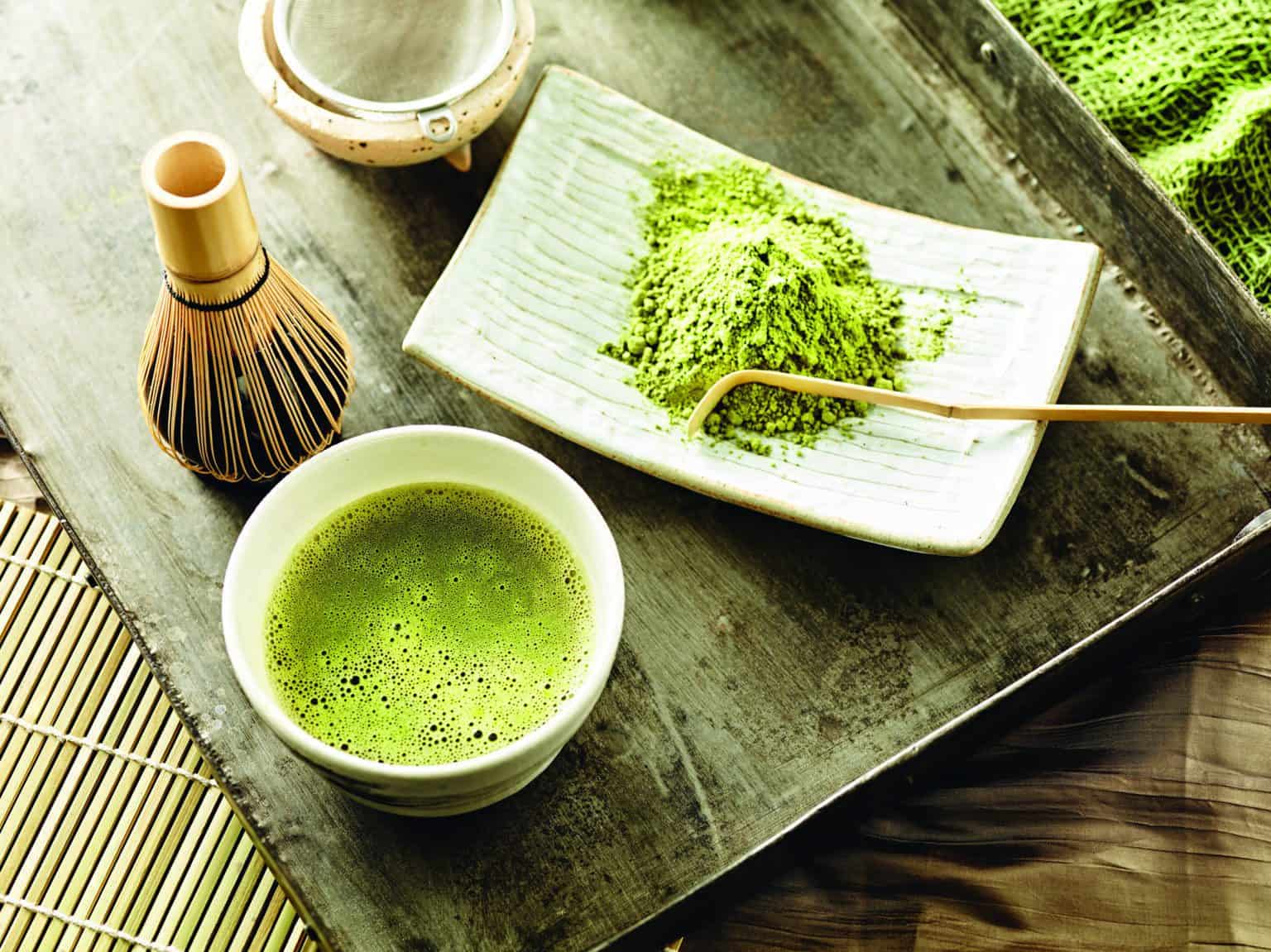
But the research that has been done is promising. “Some research suggests that matcha may help boost metabolism and increase fat oxidation, which could potentially aid in weight loss efforts when combined with a healthy diet and exercise,” says Ayales.ĭoes Blue Matcha Provide Health Benefits?īlue matcha has been studied less extensively than the traditional kind. Temporary increase in metabolism Matcha also seems to have some level of impact on metabolism and weight management.This is why matcha is so popular among those who want a natural way to improve their energy levels and mental clarity. A review published in May 2022 in Food Science and Human Wellness backs this up. Better focus and concentration “Matcha contains a unique amino acid called L-theanine, which has been shown to promote relaxation and reduce stress while improving focus and concentration,” says Ayales.
#MATCHA VS GREEN TEA CAFFEINE SKIN#
“Antioxidants help fight oxidative stress and reduce inflammation in the body, potentially offering benefits for heart health, brain health, skin health, and overall well-being,” says the clinical herbalist Adriana Ayales, the founder of Anima Mundi. High antioxidant content Matcha is known for its high antioxidant content, particularly catechins, which are a type of flavonoid, according to research published in December 2020 in the journal Molecules.Research has found support for the following claims. Different types of matcha, such as ceremonial grade and culinary grade, are known to differ in quality and beneficial compounds. Matcha is a type of powdered green tea that has become popular because of its purported health benefits. Potential Benefits of Other Types of Matcha Additionally, traditional matcha derives many of its health benefits from a class of antioxidant compounds called polyphenols, while blue matcha’s main antioxidants are plant pigments called anthocyanins. One is that blue matcha is naturally caffeine-free, while green matcha is not. While both are bright-colored powders that are dissolved in hot water to make a colorful antioxidant-rich drink, there are some important differences between blue matcha and traditional green matcha. Blue matcha is made from the powdered petals of the butterfly pea plant ( Clitoria mariana L.).

Traditional matcha comes from finely ground green tea leaves harvested from the Camellia sinensis plant (the same one that gives us black, white, and green tea). While it may appear that blue matcha is a blue-tinted matcha powder, the two substances come from entirely different plants. So while the dried petals of the flower are deep blue, when they're added to, say, lemon juice, the color will change from blue to red, violet, or green. When dissolved in liquid, “anthocyanins are very susceptible to the acidity of that liquid,” says Eva De Angelis, a licensed dietitian nutritionist. Like other naturally blue and purple foods, such as blueberries, it gets its color from plant-based compounds known as anthocyanins.īutterfly pea powder has one other notable attribute that makes it a social media darling: In the presence of acids, it changes color, according to a literature review published in the May 2019 Frontiers in Plant Science. You can buy the powder from some tea purveyors, such as Harney & Sons.īefore blue matcha became popular, butterfly pea powder, sometimes called blue pea powder, was best known as a natural colorant for foods. Like matcha, the flower powder is mixed with hot water, hence the name. What people are calling blue matcha comes from the powdered brilliant bluish purple petals of the butterfly pea flower ( Clitoria mariana L.), a plant in the pea family, according to the U.S.

The name for this buzzed-about ingredient is only half-right: It is blue, but has absolutely nothing to do with traditional matcha, which is made with whole green tea leaves, finely ground to make a bright green powder that can be mixed with water and consumed. So why are people so excited about it? Does blue matcha tea have any real health or nutritional benefits, or does it just look pretty? Here’s everything you need to know about blue matcha powder and tea, and whether it’s worth a try.

If you haven’t come across the brightly colored blue powder while scrolling your TikTok feed for recipes and food hacks, it’s only a matter of time. Blue matcha has also appeared in popular videos about smoothies, teas, and even homemade skin-care products.
#MATCHA VS GREEN TEA CAFFEINE HOW TO#
One recent video posted by the coffee chain was a tutorial on how to make an “Earth Day Matcha,” featuring both green and blue matcha, and went viral with more than two million views. Blue matcha is the latest foodie trend taking Instagram and TikTok by storm, with the hashtag #bluematcha racking up more than 40 million views on TikTok alone.


 0 kommentar(er)
0 kommentar(er)
